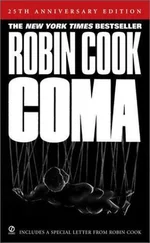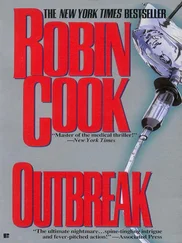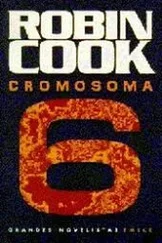Robin Cook - Mindbend
Здесь есть возможность читать онлайн «Robin Cook - Mindbend» весь текст электронной книги совершенно бесплатно (целиком полную версию без сокращений). В некоторых случаях можно слушать аудио, скачать через торрент в формате fb2 и присутствует краткое содержание. Жанр: Триллер, на английском языке. Описание произведения, (предисловие) а так же отзывы посетителей доступны на портале библиотеки ЛибКат.
- Название:Mindbend
- Автор:
- Жанр:
- Год:неизвестен
- ISBN:нет данных
- Рейтинг книги:3 / 5. Голосов: 1
-
Избранное:Добавить в избранное
- Отзывы:
-
Ваша оценка:
- 60
- 1
- 2
- 3
- 4
- 5
Mindbend: краткое содержание, описание и аннотация
Предлагаем к чтению аннотацию, описание, краткое содержание или предисловие (зависит от того, что написал сам автор книги «Mindbend»). Если вы не нашли необходимую информацию о книге — напишите в комментариях, мы постараемся отыскать её.
A storyteller of the most daring imagination…chillingly entertaining and thought-provoking. – Associated Press
***
A gigantic drug firm has offered an aspiring young doctor a lucrative job that will help support his pregnant wife. It could make their dreams come true-or their nightmares…
Mindbend — читать онлайн бесплатно полную книгу (весь текст) целиком
Ниже представлен текст книги, разбитый по страницам. Система сохранения места последней прочитанной страницы, позволяет с удобством читать онлайн бесплатно книгу «Mindbend», без необходимости каждый раз заново искать на чём Вы остановились. Поставьте закладку, и сможете в любой момент перейти на страницу, на которой закончили чтение.
Интервал:
Закладка:

Robin Cook
Mindbend
For Barbara
PROLOGUE
FETAL RESEARCH BANNED
New Regulations for Medical Research
By HAROLD BARLOW
Special to The New York Times
WASHINGTON, July 12, 1974-President Richard M. Nixon signed into law today the National Research Act (Pub. L. 93-348). The law calls for the creation of a National Commission for the Protection of Human Subjects in Biomedical and Behavioral Research. There has been growing concern about the ethics of research involving children, retarded persons, prisoners, the terminally ill, and particularly fetuses.
It is hoped that by creating appropriate guidelines some of the shocking abuses that have been exposed of late can be obviated, such as the purposeful infecting of a large number of retarded children with hepatitis in order to study the natural progession of the disease, or the discovery a few months ago at a Boston hospital of a dozen dismembered aborted fetuses.
The first phase of implementing the law includes a moratorium on “research in the United States on a living human fetus, before or after induced abortion, unless such research is done for the purpose of assuring the survival of such fetus.” Obviously the fetal issue is intimately tied to the highly emotional abortion issue.
Response to the new legislation in scientific circles has been mixed. Dr. George C. Marstons of Cornell Medical Center welcomed the new law, stating that “guidelines for ethical behavior in human experimentation are long overdue. The competitive economic pressure for research breakthroughs creates an atmosphere where abuse is inevitable.”
Dr. Clyde Harrison of Arolen Pharmaceuticals disagreed with Dr. Marstons, saying that “anti-abortion politics are holding science hostage, preventing needed health care research.” Dr. Harrison went on to explain that fetal research has resulted in many significant scientific gains. Among the most important is a possible cure for diabetes. Fetal tissue injected into the pancreas has been proven to repopulate the islet cells that produce insulin. Equally important is the experimental use of fetal tissue to heal previously incurable paralysis resulting from spinal cord injuries. Injected into the site of the trauma, the tissue causes spontaneous healing by generating growth of new, healthy cells.
It is too early to judge the impact of this bill until the various commissions mandated by law make their recommendations to Secretary Caspar Weinberger. In the area of research the new law will have an immediate impact by severely limiting the supply of fetal tissue. Apparently planned abortions have been the primary source of such tissue, though it is not known whether or not this need played a role in doctors’ decisions to abort.
NOVEMBER 27, 1984
JULIAN CLINIC, NEW YORK CITY
Candice Harley felt the needle pierce the skin of her lower back, followed by a sharp burning sensation. It was like a bee sting, only the pain rapidly evaporated.
“I’m just putting in some local anesthetic, Candy,” said Dr. Stephen Burnham, a swarthy, good-looking anesthesiologist, who had assured Candy that she was not going to feel a thing. The trouble was that she had already felt pain-not a lot but enough to make her lose a certain amount of faith in what Dr. Burnham had told her. She had wanted to be put to sleep. But Dr. Burnham had informed her that epidural anesthesia was safer and would leave her feeling better after the abortion and the sterilization procedure were over.
Candy bit her lower lip. There was another stab of pain. Again it wasn’t severe, but she felt vulnerable and ill prepared for what was happening. At thirty-six, Candy had never been in a hospital, much less had an operation. She was terrified and had told Dr. Burnham as much. She felt the burning sensation again, and by reflex she straightened her back.
“Don’t move now,” admonished Dr. Burnham.
“I’m sorry,” blurted Candy, afraid that if she didn’t cooperate they would not take care of her properly. She was sitting on the side of a gurney in an alcove next to an operating room. A nurse was standing in front of her and to the right was a curtain which had been pulled to isolate the alcove from the busy OR corridor. Behind the curtain, Candy could hear muted voices and the sound of running water. Directly ahead was a door with a small window through which she could see the operating room.
Candy’s only covering was a flimsy hospital gown, open in the back where the doctor was busy doing whatever he was doing. He had elaborately explained to Candy what was going to happen, but her ability to concentrate was severely limited by the intimidating surroundings. Everything was new and frightening.
“Tuohy needle, please,” said Dr. Burnham. Candy wondered what a Tuohy needle was. It sounded awful. She heard a cellophane package being torn open.
Dr. Burnham eyed the three-inch needle in his gloved hand, sliding the stylet up and down to make sure it moved freely. Stepping to the left so that he could make sure that Candy was sitting straight, he positioned the needle over the area he had injected with the local anesthetic.
Using both hands, he pushed the needle into Candy’s back. His experienced fingers could feel the needle break through the skin and slide between the bony prominences of Candy’s lumbar vertebrae. He stopped just short of the ligamentum flavum, the barrier covering the spinal canal. Epidural anesthesia was tricky and that was one reason Dr. Burnham liked to use it. He knew not everybody could do it as well as he could and that knowledge gave him satisfaction. With a flourish he pulled out the stylet. As expected, no cerebrospinal fluid came out. Replacing the stylet, he advanced the Tuohy needle another millimeter and felt it pop through the ligamentum flavum. A test dose of air went in easily. Perfect! Replacing the empty needle with one filled with tetracaine, Dr. Burnham gave Candy a small dose.
“I feel a strange sensation on the side of my leg,” said Candy with concern.
“That just means we’re where we are supposed to be,” said Dr. Burnham. With deft hands he removed the syringe with the tetracaine and then threaded a small plastic catheter up through the Tuohy needle. Once the catheter was in place, he removed the needle. A piece of paper tape went over the puncture site.
“That’s that,” said Dr. Burnham, stripping off his sterile gloves and putting a hand on Candy’s shoulder to urge her to lie down. “Now you can’t say that hurt very much.”
“But I don’t feel the anesthetic,” said Candy, fearful they would go ahead with the surgery even if the anesthetic wasn’t working.
“That’s because I haven’t given you anything yet,” said Dr. Burnham.
Candy allowed herself to be lowered to the gurney, the nurse helping by lifting her legs, then covering her with the thin cotton blanket. Candy clutched the cover to her chest as if it would afford some protection. Dr. Burnham fussed with a small plastic tube that snaked out from beneath her.
“Do you still feel as nervous?” questioned Dr. Burnham.
“Worse!” admitted Candy.
“I’ll give you a little more sedative,” said Dr. Burnham, squeezing Candy’s shoulder reassuringly. While she watched, he injected something into her IV line.
“OK, let’s go,” said Dr. Burnham.
The gurney with Candy on it rolled silently into the OR, which was bustling with activity. Candy’s eyes scanned the room. It was dazzlingly white with white tile walls and floor and white acoustical ceiling. X-ray view boxes lined one wall, futuristic electronic monitoring equipment another.
Читать дальшеИнтервал:
Закладка:
Похожие книги на «Mindbend»
Представляем Вашему вниманию похожие книги на «Mindbend» списком для выбора. Мы отобрали схожую по названию и смыслу литературу в надежде предоставить читателям больше вариантов отыскать новые, интересные, ещё непрочитанные произведения.
Обсуждение, отзывы о книге «Mindbend» и просто собственные мнения читателей. Оставьте ваши комментарии, напишите, что Вы думаете о произведении, его смысле или главных героях. Укажите что конкретно понравилось, а что нет, и почему Вы так считаете.












